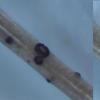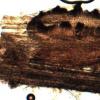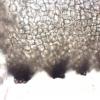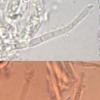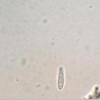
27-11-2025 15:41
Thomas LæssøeSpores brownish, typically 4-celled; 26.8 x 2.4;

27-11-2025 12:01
Thomas Læssøehttps://svampe.databasen.org/observations/10496727

27-11-2025 11:46
Thomas Læssøehttps://svampe.databasen.org/observations/10493918

27-11-2025 11:31
Thomas LæssøeCollectors notes: Immersed ascomata, erumpent thro

23-09-2025 13:31
Thomas Læssøehttps://svampe.databasen.org/observations/10534623

25-11-2025 14:24
Thomas Læssøehttps://svampe.databasen.org/observations/10490522

26-11-2025 18:13
The entire run of Mycotaxon is now available throu

25-11-2025 11:03
Mick PeerdemanHi all,One of my earliest microscopy attempts, so
Apothecia are at first immersed in the substrate when they are more or less spherical with a small ostiole. They then becoming erumpent and urceolate, <140 µm diam. The hymenium is pale cream with a light brown exterior and rough dark brown "teeth" on the margin.
The excipulum is a brown textura angularis/globulosa. Marginal cells are dark brown and form irregular "teeth".
Asci are 26-32 x 4-5 µm, 8-spored, apex blue in IKI. They are mostly immature.
Paraphyses are narrowly cylindrical, ca 1.5 µm wide, about as long as asci.
Spores are hyaline, 0-septate, 7-9 x 1.5-2 µm, fusiform-clavate.
I think it belongs in the Naevioideae but this isn't a group I'm very familiar with and I haven't been able to put a name to it. As ever, I'd be very grateful for any suggestions.
Marcus

Zotto
Maybe the teeth could suggest some sort of Pirottaea (which probably belong to multiple lineages in Pyrenopeziza).
Many members of the Pyrenopeziza lineage are extremely common on grasses (based on anamorphs, grass disease symptoms and DNA sequences), but their DNA and teleomorph morphology haven't been linked up yet.
Cheers,
Brian
Thanks for pointing me in the right direction. This will have to be added to my large collection of unnamed specimens.
I've been trying to get to grips with the commoner species of Mollisia and Pyrenopeziza over the last few months. It's not easy!
Marcus
